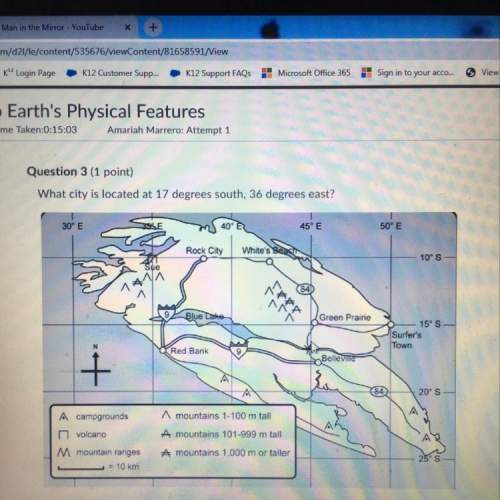5. A mineral sample is found to have a density of
3.0 grams per cubic centimeter. It is then
...

Chemistry, 09.03.2021 20:10 keiannabmoss
5. A mineral sample is found to have a density of
3.0 grams per cubic centimeter. It is then
broken into two pieces, with one piece twice as
large as the other. The smaller of the two pieces
will have a density of
A) 1.0 g/cm3 B) 1.5 g/cm3
C) 3.0 g/cm3 D) 6.0 g/cm3

Answers: 1


Other questions on the subject: Chemistry

Chemistry, 22.06.2019 09:00, kkmonsterhigh18
The diagram below shows a cell placed in a solution. a cell is shown placed inside a beaker. it is labeled cell. the solution inside the beaker is labeled 40% salt solution and the solution inside the cell is labeled 20% salt solution. only water is allowed to move in and out of the cell. what will most likely happen to the cell? it will expand as water moves out of it. it will shrink as water moves out of it. it will expand as water moves into it. it will shrink as water moves into it.
Answers: 2

Chemistry, 22.06.2019 14:00, BrandyLeach01
How does the presence of oxygen affect the chemical pathways used to extract energy from glucose?
Answers: 3

Chemistry, 22.06.2019 22:00, jlegrand9098
4.25g sample of solid ammonium nitrate dissolves in 60.0g of water in a coffee-cup calorimeter, the temperature drops from 22.0 c to 16.9 c. assume that the specific heat of the solution is the same as that of pure water. calculate delta(h) (in kj/mol nh4no3) for the solution proces.
Answers: 2
You know the right answer?
Questions in other subjects:



Business, 15.12.2020 17:20


Mathematics, 15.12.2020 17:20

Mathematics, 15.12.2020 17:20

Mathematics, 15.12.2020 17:20


Mathematics, 15.12.2020 17:20

Geography, 15.12.2020 17:20




